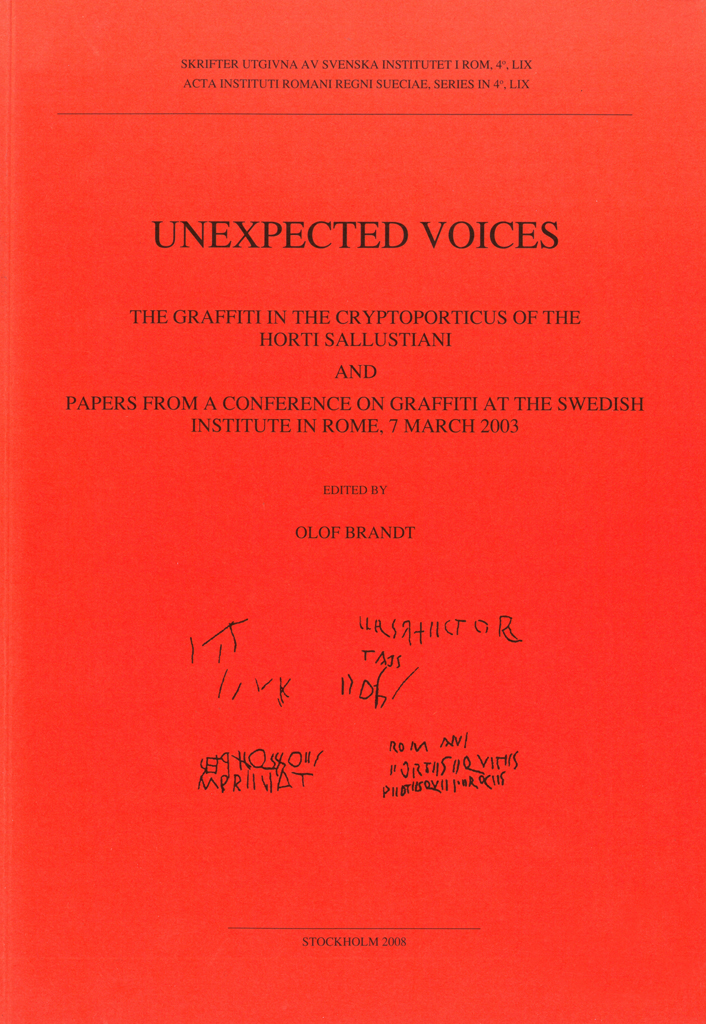Opuscula 15 is published by the Swedish Institutes at Athens and Rome. Distributed by Eddy.se AB. View volume at ERIH PLUS. Roman and Early Byzantine evidence from the area of Palamas. A preliminary report of the ongoing Greek-Swedish archaeological work in the region of Karditsa, Thessaly By Maria Vaïopoulou, Robin Rönnlund, Fotini Tsiouka, Johan Klange, Derek Pitman, Sotiria Dandou, Rich Potter, Lawrence Shaw, Lewis Webb, Stelios Ieremias, Ian Randall & Harry Manley Abstract This paper presents preliminary results of the Palamas Archaeological Project relating to the Late Roman and Early Byzantine periods in the study area in western Thessaly, Greece. These periods are comparatively understudied in Thessaly, and the aim of this work is to highlight the extent of the material and the potential of investigating the archaeology of Late Antiquity in the region. The work was centred on excavations and survey at the site at Vlochos, alongside architectural survey at the neighbouring site on Kourtikiano hill. The paper also presents studies into Late Roman and Early Byzantine material found during cleaning at Vlochos. Additionally, an unpublished inscription spoliated in a church in nearby Palamas is presented. The results show a dynamic and detailed range of Late Antique activity in…
Opuscula 14 is published with open access. Printed edition distributed by Eddy.se AB. Also available at Amazon.com, Adlibris, and Bokus. View volume at ERIH PLUS. The Invitation to the Dance. An intertextual reassessment By Julia Habetzeder (Uppsala University, Sweden) Abstract With its original manifestation generally dated to c. 150 BC, the Invitation to the Dance is a textbook example of Hellenistic sculpture. But despite much scholarly attention there is still no consensus as to what motif the sculpture group depicts. Inspired by intertextual theory, this study catalogues and re-examines 35 sculptures of the female figure and 34 sculptures of the satyr. The article focuses on preserved sculptures, rather than a reconstructed model image. Variations of the repeated forms are highlighted as significant for the interpretation of the types. The reading of the Invitation to the Dance thus put forward suggests that the group composition displays the moment after the satyr has pulled the female’s garment down from her upper body. It is furthermore emphasized that both satyr and female figure were at times—perhaps even predominately—displayed as solitary figures. The satyr’s foot-clapper is suggested to have been included primarily in instances where the satyr was displayed on his own. Sculptures of the…
Published by the Swedish Institute of Classical Studies in Rome. Available for purchase at Amazon.com, Amazon.de, Bokus.com, Adlibris.com. Distributed by Eddy.se AB. Unexpected voices. The graffiti in the cryptoporticus of the Horti Sallustiani and papers from a conference on graffiti at the Swedish Institute in Rome, 7 march 2003 By Olof Brandt (ed.) This volume presents the results of a collaboration between the Swedish Institute in Rome and the Embassy of the United States of America in Rome. The object of the research was a cryptoporticus, part of the ancient Horti Sallustiani, in the area of the American Embassy, and especially the graffiti found on the walls of the cryptoporticus, which were also decorated with paintings. The cryptoporticus, which is dated to the first century AD, was excavated in 1949–1950 and in the 1990s, but the graffiti have never been completely published. In this publication, all the graffiti are discussed and dated. Some belong to Late Antiquity, others were made in the 16th and 17th centuries. The study of these graffiti gives important information about the later fate of the first-century cryptoporticus. Several unpublished fragments of wall-paintings are also presented, and more general historic and archaeological aspects of the cryptoporticus…



